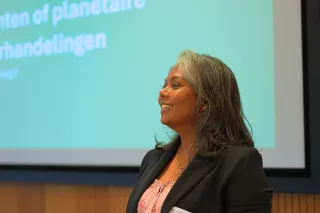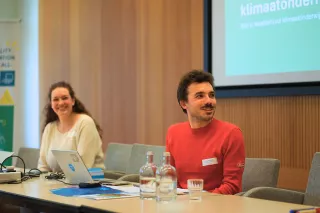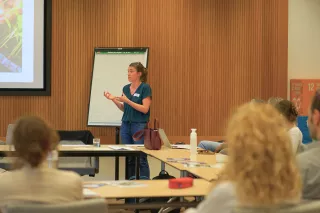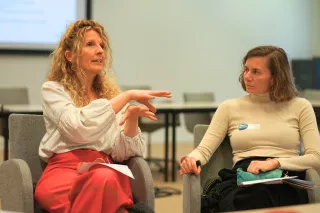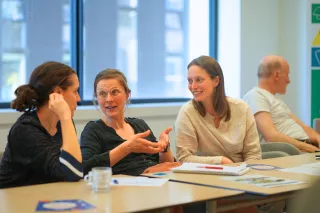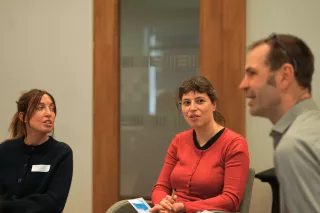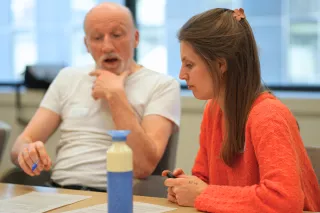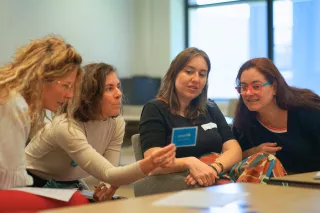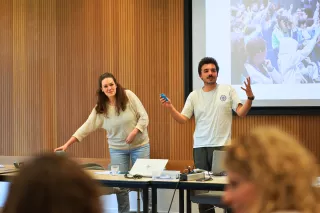
Education is both affected by climate change and a potential part of the solution. “As a teacher, you can make a real difference by helping pupils build resilience and become critically engaged citizens.” Kobe added that children are not only vulnerable to the consequences of climate change, but also have the right to be heard in the conversation about their future.
What Does Quality Climate Education Look Like?
Asmita Rajaram, coordinator of the S-Cool-Links programme at VVOB, invited participants to reflect critically on what quality climate education truly entails. She asked them to analyse two practical projects from the international TeachersCOP entries, an initiative by the Office for Climate Education (OCE) and VVOB that gives teachers a voice in the global climate dialogue.
Drawing from her experience with S-Cool-Links, an interactive online tool supporting secondary school teachers with scientifically backed information, teaching materials and learning strategies, she emphasised that climate projects must not only be strong in content, but also connect with pupils’ everyday lives and encourage them to think and act.
Using the TeachersCOP criteria, it became clear how essential it is for climate projects to be well thought out, action-oriented and learner-centred. These criteria focus on three core pillars: Contextualisation (a relevant issue linked to climate change), pedagogical quality (clear learning objectives, skills development and social impact), and communication (clear, engaging and ideally also creative or innovative). Participants left with a practical framework to help them recognise and develop their own quality climate education initiatives.
Children’s Voices in the Climate Debate
UNICEF Belgium also presented their children’s climate summit, a strong example of global citizenship education in practice. In the initial phase, schools, youth organisations and local groups explored topics such as climate adaptation, mitigation and climate justice, using a methodology grounded explicitly in the framework of children’s rights. Children developed their viewpoints through creative media such as posters, videos and models.
On 13 November 2023, 120 children gathered at the Museum of Natural Sciences in Brussels for the main summit. During workshops, they engaged in dialogue with experts and shared their messages with Minister Zakia Khattabi. These messages, brought together in a visual summary, were then taken to COP28, where they were shared with policymakers and delegations.
In total, nearly 1,000 children took part in the entire process. The project demonstrated that children not only want to be involved, but can also contribute to the climate conversation with impressive insight and creativity.
Video Report by Karrewiet About the Children's Climate Summit
Ready to Take the Next Step with Climate Education?
Want to learn more about the children’s climate summit? Visit unicef.be .
Curious how to bring climate education into your classroom? Explore the S-Cool-Links website.
Want to know more about the TeachersCOP? Discover the initiative here.
Sources and working methods
Find resource materials for your climate lessons on the Office for Climate Education and Earthday.org websites.
Discover innovative working methods for your classroom on Fee Academy, Klimax and HundrED.org.
